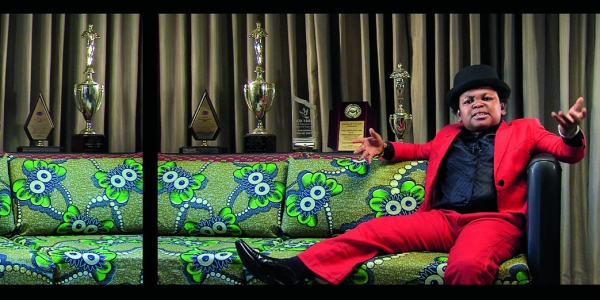The internationally renowned artist is currently hosting an exhibition at ACMI, showcasing the artist’s filmography that has been shown at The Museum of Modern Art (New York), Castello di Rivoli (Turin, Italy), the National Museum of African Art (Washington D.C., USA) and many more over the years.
Candice Breitz: The Character, Breitz’s current exhibition, is an exploration of popular culture, identity, and the ancient debate of nature versus nurture. Through displacement facilitated by sparse backgrounds and repetition, Breitz allows her thoughts about these topics to project themselves from the screen in unique narratives that invokes thought. The Character, the short film, is an example of this.
Over 20 minutes, 15 school children from Mumbai divulge their thoughts about the main character in a film they just watched, however, the catch is that each child watched a different movie. How does this work? Through meticulous editing, Breitz restructured the children’s responses to construct an entirely new character that is credible, relatable and new.
“Working with kids is interesting because they often haven’t quite managed to naturalise certain ways of being in the world,” said Breitz thoughtfully. “Kids often give up the game – they offer a way into thinking about the process of becoming an individual inasmuch as you can see the pieces coming together when you observe them. Adults are more polished when it comes to appearing to have resolved the puzzle. The process involved in being an individual is more readily observable when it comes to kids.”
It’s this adaptability, and exploration of identity, that fascinates Breitz about children. Adults assume they know themselves entirely, whereas children don’t. Despite this disparity, the children exhibit empathetic responses similar to that of an adult in The Character.
“It’s not right to separate a mother from her child,” sympathised one child, while another girl stated that, “Nobody likes bad endings because people don’t understand why this happen[ed].” Profoundly, one could postulate that Breitz explores the essence of human, and what makes us human.
“My attraction to moving images came out of a desire to work in a medium that might allow me to communicate to a broad range of people,” explained the Professor of Fine Art. It’s been 19 years since she graduated with her first degree in Fine Arts; since then she’s been studying, travelling and creating innovative and introspective work, Him + Her being one of these pinnacles of self-exploration.
“I watched every movie that Jack Nicholson and Meryl Streep had made up to 2008, two or three times each.” said Breitz, explaining that it was her way of selecting the Nicholsons and Streeps that she wanted to use. “I then took each of the films I had selected for inclusion in my piece and chopped them up, extracting the fragments of Jack and Meryl that I thought I might want to use. I then transcribed the footage before the editing process began. All in all, it took three years to make Him + Her.”
That was only the preparation though. From here Breitz sought assistance from her students and fellow artists, who edited each section of film that Breitz wanted to use, removing Streep and Nicholson from their backgrounds and depositing them on a black one. With these sections of film, the artist spread them over seven screens to create two separate narratives where Streep and Nicholson argument to themselves. Breitz explained that Him + Her is essentially two writers trying to write an autobiography.
“I’d like to think of it as a form of displacement, which makes it possible for people to look at things that are familiar to them in new ways,” which is exactly what Him + Her does. Using these iconic actors, Breitz forces us to question what identity is. Both Her (the film that uses Streep to portray the internalised conflicts of women), and Him (the Nicholson amalgamation that sometimes borders on insane), delve into the topics of masculinity and femininity. These internalised arguments reference the media identities we’re supposed to assimilate, while acknowledging the constant struggle of individual identity. In fact, identity is a topic heavily imbued throughout Breitz’s work, a topic that is more of a self-exploration than anything else.
“I’ve spent the last 15 years thinking about that question through my work,” remarked Breitz, bemused, then proceeded to elaborate on the age-old question of nature versus nurture. “I don’t expect to ever arrive at a definitive answer! But I would certainly lean more towards nurture than nature in terms of the factor that most intensely determines who we become as individuals. The world rubs off on us constantly—often in ways that we are not aware of—we are constantly absorbing and reflecting what is going on around us.”
Nonetheless, it remains a question that Breitz, alike many in the world, cannot answer, but maybe her work can.
BY AVRILLE BYLOK-COLLARD

